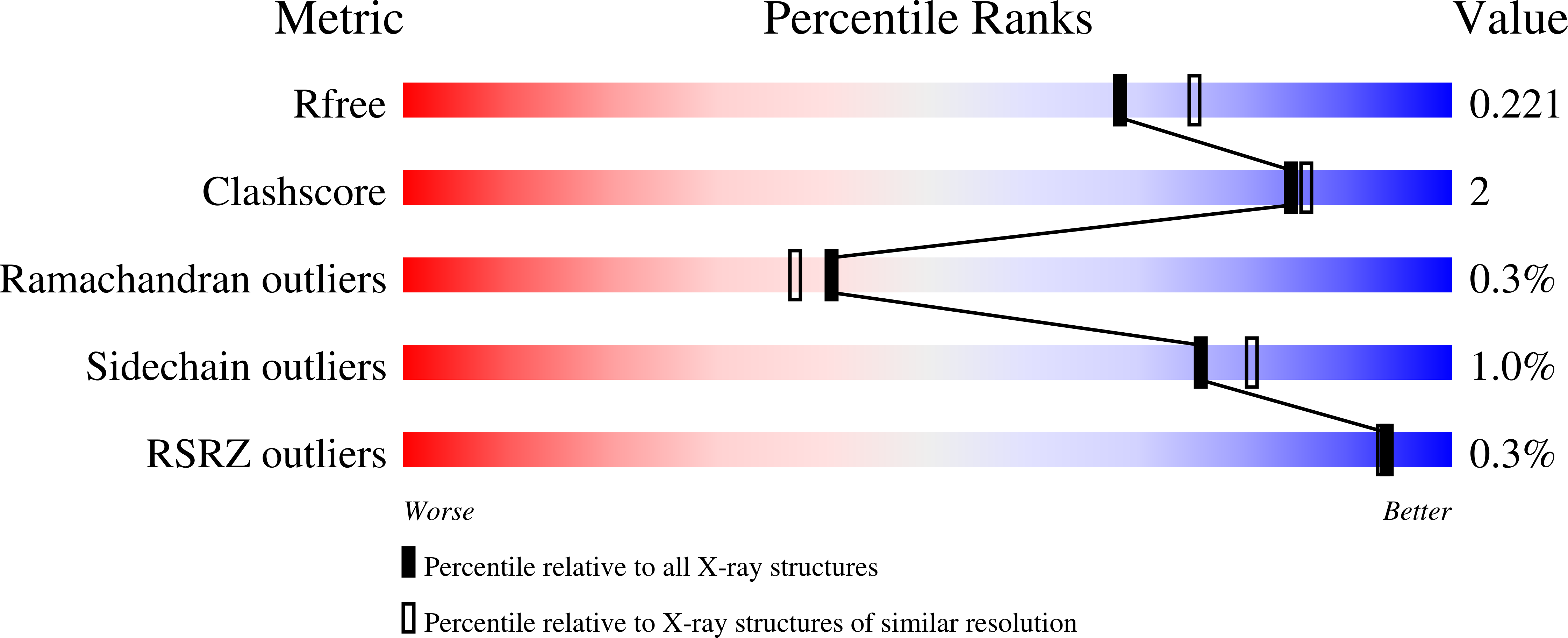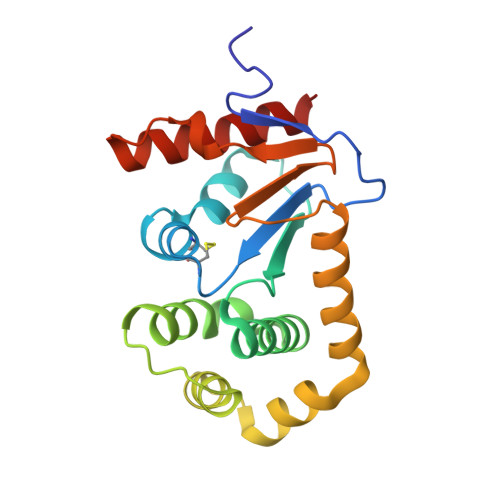The Fragment-Based Development of a Benzofuran Hit as a New Class of Escherichia coli DsbA Inhibitors.
Duncan, L.F., Wang, G., Ilyichova, O.V., Scanlon, M.J., Heras, B., Abbott, B.M.(2019) Molecules 24
- PubMed: 31635355
- DOI: https://doi.org/10.3390/molecules24203756
- Primary Citation of Related Structures:
6PMF, 6PML, 6POH, 6POI, 6POQ, 6PVY, 6PVZ - PubMed Abstract:
A fragment-based drug discovery approach was taken to target the thiol-disulfide oxidoreductase enzyme DsbA from Escherichia coli ( Ec DsbA). This enzyme is critical for the correct folding of virulence factors in many pathogenic Gram-negative bacteria, and small molecule inhibitors can potentially be developed as anti-virulence compounds. Biophysical screening of a library of fragments identified several classes of fragments with affinity to Ec DsbA. One hit with high mM affinity, 2-(6-bromobenzofuran-3-yl)acetic acid ( 6 ), was chemically elaborated at several positions around the scaffold. X-ray crystal structures of the elaborated analogues showed binding in the hydrophobic binding groove adjacent to the catalytic disulfide bond of Ec DsbA. Binding affinity was calculated based on NMR studies and compounds 25 and 28 were identified as the highest affinity binders with dissociation constants ( K D ) of 326 ¡À 25 and 341 ¡À 57 ?M respectively. This work suggests the potential to develop benzofuran fragments into a novel class of Ec DsbA inhibitors.
Organizational Affiliation:
Department of Chemistry and Physics, La Trobe Institute for Molecular Science, La Trobe University, Melbourne 3086, Australia. dunclf01@gmail.com.



















